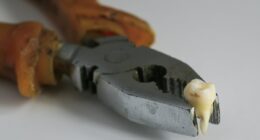Another 700,000 Australians would have lost their job during the coronavirus recession without JobKeeper wage subsidies costing taxpayers $100,000 for every saved worker.
The COVID-19 shutdowns in March threw 300,000 people out of work over the following four months, leading to a record one million people being officially unemployed by July – the worst month of the economic crisis.
The jobless rate surged from 5.2 per cent to a 22-year high of 7.5 per cent but the Reserve Bank of Australia said that would have reached 12.5 per cent without JobKeeper – a level last seen in the 1930s Great Depression.
RBA economists James Bishop and Iris Day did modelling showing that another 700,000 people, on top of the one million who were officially unemployed, would have been thrown out of work if it wasn’t for JobKeeper.
The scheme provided $1,500 fortnightly wage subsidies for staff if businesses could not operate during the lockdowns.


Another 700,000 Australians would have lost their job during the coronavirus recession without JobKeeper wage subsidies costing $100,000 for every worker
It propped up the wages of 3.5million workers between April and July at a cost of $70billion, or $100,000 for each of the 700,000 jobs saved.
‘JobKeeper reduced overall employment losses by at least 700,000 during its first four months,’ the Reserve Bank said.
Employers were paid by taxpayers – and passed on the money to staff – if they could prove the coronavirus shutdowns had caused their revenue to plunge by 30 per cent or more.
While the official unemployment rate captures the number of people going on the dole, the Australian Bureau of Statistics data doesn’t cover the hidden unemployed who gave up looking for work and didn’t apply for JobSeeker.
That was why there was a big gap between the number of Australians who officially lost their job and the number of people who had a job.
In March, when the World Health Organisation declared a COVID-19 pandemic, almost 13million Australians were employed.
READ RELATED: The Incredible Queen Mary Ship was the Largest Ship In It’s Time!
A month later, that dropped to 12.4million as 600,000 fewer Australians had a job.
By May, the ranks of those with a job fell to 12.1million – a plunge of 871,600 in just two months.
As of June, 12.35million Australians had a job but the ranks of the employed were 646,600 fewer than in February.
‘To put this estimate into perspective, the actual fall in employment over the first half of 2020 was 650,000,’ the Reserve Bank said.
‘As such, our estimates imply that overall employment losses would have been twice as large over this period without JobKeeper.’


The initial $70billion program propped up the wages of 3.5million workers between April and July, with the 700,000 jobs saved working out at $100,000 per person. Pictured is a cafe worker at Brunswick in Melbourne following a three-month city-wide lockdown
Australians on JobKeeper were classified in the statistics as being employed, even if they were paid to stay home and do nothing.
Without JobKeeper, the number of people with a job would have fallen to 11.4million.
Since September 28, JobKeeper has been scaled back to $1,200 a fortnight for those working 20 hours or more per week on average.
Part-time workers putting in fewer hours could receive $750 a fortnight.
JobKeeper is being diluted again on New Year’s Day before being phased out on March 28.
Australians working more than 20 hours will receive $1,000 a fortnight compared with $650 for part-timers putting in fewer hours.
JobKeeper was meant have ended in September but the six-month extension is costing taxpayers a further $16.6billion.
The overall $86.6billion cost of JobKeeper saw Treasurer Josh Frydenberg in October announce a budget deficit of $213.7billion for 2020-21.
This would comprise 11 per cent of GDP, the highest since World War II.
Source: Daily Mail





